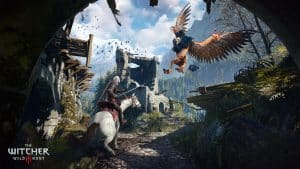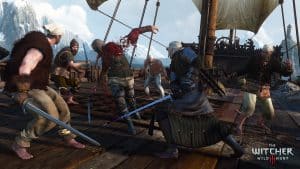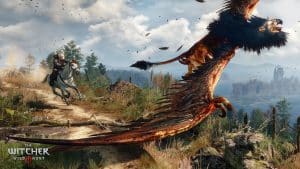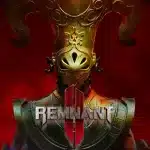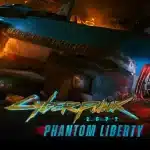The Witcher 3: Wild Hunt
Related Games
Description
🔥 What is The Witcher 3: Wild Hunt for PC?
The Witcher 3: Wild Hunt is a monumental open-world role-playing game developed by CD Projekt Red and published by CD Projekt in 2015 for PC and later for other platforms, establishing itself as one of the greatest RPGs ever created. It combines cinematic storytelling, philosophical moral choices, and a richly imagined world that feels authentic, lived-in, and emotionally resonant. Based on the acclaimed novels by Polish author Andrzej Sapkowski, the game continues the saga of Geralt of Rivia, a professional monster hunter caught between human politics, supernatural horrors, and the relentless passage of destiny.
The central narrative follows Geralt’s search for Ciri, his adopted daughter and a young woman of Elder Blood, who is being pursued by the terrifying spectral force known as the Wild Hunt. This journey takes the player across a continent scarred by war and haunted by legends, where every encounter and every choice can reshape lives. What truly sets The Witcher 3 apart is its mature and human tone, a rare combination of high fantasy and intimate storytelling that challenges the boundaries of the genre.
The world of The Witcher 3 feels astonishingly alive, filled with peasants struggling to survive, kings wrestling with morality, and spirits that embody human despair. Every dialogue, decision, and side story contributes to a complex tapestry of consequence, ensuring that no player experiences the same tale in quite the same way.
👉 Features of The Witcher 3: Wild Hunt
A Vast, Seamless Open World
The Witcher 3 delivers one of the most ambitious and detailed open worlds ever designed, where exploration feels as rewarding as the story itself. Each region, from the misty bogs of Velen to the windswept cliffs of Skellige, has its own customs, dialects, and myths that reveal the culture of the people who inhabit it. The world is seamless, without artificial boundaries or repetitive structures, allowing players to lose themselves completely in its scale and rhythm.
The level of environmental storytelling is remarkable, with every ruin, battlefield, and forest telling silent stories through traces of tragedy and decay. Hidden chests might contain relics from forgotten wars, and random encounters can lead to entire questlines that feel hand-crafted rather than procedurally generated.
Deep Storytelling and Complex Characters
At the heart of The Witcher 3 lies a story that values nuance, humanity, and emotional complexity above simple heroism. Geralt’s relationships with Yennefer, Triss, and Ciri feel natural and layered, filled with history and longing rather than simple romantic tropes. Even minor characters, from peasants to bandits, are written with depth, their motivations tied to survival, faith, or personal despair.
Every major quest unfolds like a self-contained novella, blending tension, humor, and moral weight in a way that feels effortless. The game’s writing manages to balance grounded realism with mythic grandeur, making even the smallest story beat feel essential to the greater world.
Dynamic Combat and Monster Hunting
Combat in The Witcher 3 is a thoughtful blend of fast-paced action and careful preparation, where success depends on knowledge as much as skill. Geralt’s two swords, steel for men and silver for monsters, form the basis of a system that rewards patience, timing, and observation. Before every hunt, players must study the monster’s nature, prepare potions and oils, and use traps and Signs to exploit weaknesses.
The combination of swordsmanship, alchemy, and magic creates battles that feel simultaneously brutal and graceful. Every fight is an expression of Geralt’s craft, reminding players that he is not a typical warrior but a trained professional who treats killing as both art and science.
Immersive Quests and Meaningful Choices
The Witcher 3’s quest design stands as one of the best in gaming history, weaving moral dilemmas into even the smallest side story. A decision that seems merciful might cause unexpected pain, while acts of cruelty can sometimes bring stability or peace. The world reacts dynamically to these choices, often in ways the player cannot predict until hours later.
This web of consequence gives the narrative a sense of realism and permanence rarely seen in RPGs. Every player’s journey becomes personal, with multiple endings reflecting the cumulative weight of their moral compass and empathy.
Expansions that Redefine DLC Quality
The game’s two expansions, Hearts of Stone and Blood and Wine, are often regarded as masterpieces in their own right, setting new standards for what downloadable content can achieve. Hearts of Stone tells a gothic tale about deals and redemption, while Blood and Wine offers a vibrant, bittersweet farewell set in the idyllic land of Toussaint. Both expand the lore and emotional scope of the main story while delivering fresh gameplay systems, new monsters, and exquisite storytelling.
Gameplay
Freedom and Exploration
Few games capture the sensation of freedom as vividly as The Witcher 3, where the landscape itself feels alive and responsive to your presence. Players can gallop through forests, cross misty lakes, or climb cliffs overlooking war-torn valleys without encountering invisible walls or forced directions. Exploration is an act of discovery, where curiosity often leads to tragedy, wonder, or unexpected friendship.
The day-night cycle and weather systems enhance immersion, making every journey unpredictable. A bright morning might turn into a thunderstorm during battle, while nightfall transforms peaceful paths into hunting grounds for monsters. This dynamic world ensures that no two playthroughs ever feel identical.
Combat and Preparation
Combat encourages strategy and reflection rather than reckless aggression. Geralt’s mastery of potions, bombs, and magical Signs transforms each fight into a puzzle of survival and adaptation. Studying the bestiary, identifying weaknesses, and crafting the right tools before facing a monster create a sense of realism and professionalism that fits the lore perfectly.
Each battle feels cinematic yet tactical, demanding awareness of distance, timing, and stamina. The more the player invests in Geralt’s alchemy and skill trees, the deeper the combat system becomes, allowing endless experimentation with different builds and approaches.
Gwent and Side Activities
Beyond battle and narrative, The Witcher 3 offers a rich variety of activities that bring balance to its darker tone. The collectible card game Gwent became a cultural phenomenon for a reason: it’s strategic, relaxing, and deceptively deep. Players can challenge merchants, nobles, and innkeepers across the continent, building unique decks that reflect their personal playstyle.
Other activities, such as horse racing, fistfights, treasure hunting, and crafting legendary armor sets, add meaningful layers to the experience. Each side quest and pastime feels embedded in the world, contributing to the illusion of a living, breathing ecosystem rather than a checklist of optional content.
Graphics
Realistic World Design
The Witcher 3 is a visual marvel that combines realistic environmental detail with poetic atmosphere, creating a world that feels both harsh and beautiful. Forests sway under the wind, cities pulse with activity, and every sunset carries the melancholy of a dying age. The art direction values subtlety, presenting a landscape that is gritty without ever losing its haunting elegance.
Every visual element supports storytelling, from the ruined castles of warlords to the lonely cottages of widows clinging to faith. Light and shadow become narrative tools, shifting tone and emotion from one scene to the next.
Animation and Visual Storytelling
The characters in The Witcher 3 move and speak with a sense of weight and authenticity rarely seen in RPGs. Facial expressions and gestures convey emotion even before a word is spoken, turning simple dialogues into intimate performances. The direction of each conversation, paired with dynamic camera movement and expressive lighting, creates a cinematic experience that never breaks immersion.
Environmental storytelling is equally powerful. Objects scattered across homes, paintings, letters, and traces of blood all contribute to world-building, allowing observant players to reconstruct stories without any exposition.
Technical Performance and Enhancements
Even years after its release, The Witcher 3 remains one of the most technically polished RPGs ever produced. The PC version allows for deep customization of graphics settings, from texture sharpness to shadow complexity, ensuring the game runs smoothly on a wide range of hardware. The 2022 Next-Gen Update further refined visuals with ray tracing, denser foliage, and higher-quality models, elevating an already stunning game to a new level of beauty.
These upgrades prove that great art direction endures beyond technological trends. The Witcher 3 continues to set the benchmark for immersion, atmosphere, and visual storytelling in the fantasy genre.
Pros and Cons
✔️ Pros
- Expansive and reactive open world filled with detail, personality, and consequence.
- Deep storytelling with complex moral themes and unforgettable character arcs.
- Tactical combat system blending preparation, skill, and adaptability.
- Exceptional voice acting and world-class environmental design.
- Two full expansions offering dozens of hours of high-quality content.
- Continual graphical updates and long-term developer support.
❌ Cons
- Combat movement can sometimes feel heavy compared to newer action RPGs.
- Inventory management and crafting systems become cluttered in long sessions.
- Minor pacing drops in some sections of the main questline.
- Occasional repetition in side objectives despite strong writing and emotional payoff.
Images

